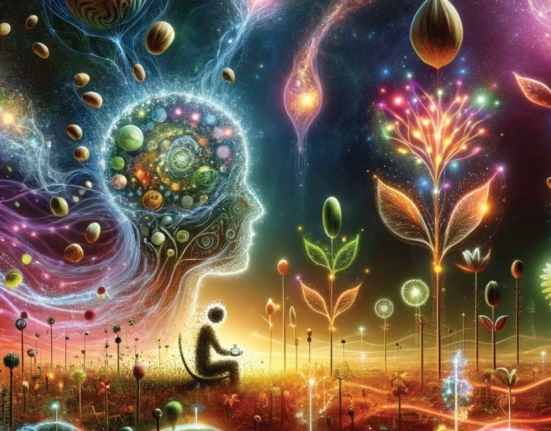Figuring out whether you’re being authentic vs. fake can be the key to unlocking a more fulfilling and honest life. Have you ever crossed paths with someone who just owns who they are? They carry themselves with quiet confidence, fully in tune with their passions and purpose. There’s no pretense – just authenticity. It’s refreshing, isn’t it? Psychologist Carl Jung referred to this as individuation – the process of uncovering and integrating every part of yourself to become whole. Simply put, it’s the path to discovering who you are.
But for many of us, living authentically feels easier said than done. We often trade pieces of ourselves for acceptance – bending to meet the expectations of family, friends, or society. Think of the musician who becomes an accountant to satisfy their parents’ dreams or the entrepreneur who plays it safe in a corporate job out of fear of failure. Sounds familiar?
Individuals who believe they are masters of their fate are as a rule the slaves of destiny.
Carl G. Jung
The truth is, denying who you are doesn’t make those desires disappear. The energy you use to hold yourself back could be the same force that fuels your creativity and growth. When you ignore that inner voice, it doesn’t stay silent – it lingers, tugging at you through dissatisfaction and frustration.
So how do you know if you’re being real or just performing for others? It starts with self-awareness. By paying attention to your choices and questioning your motivations, you can begin to untangle what’s truly you from what’s driven by outside influence. This journey isn’t about perfection – it’s about getting honest with yourself and stepping closer to the life you were meant to live. More: Carl Gustav Jung and shadow work: Face your dark side
The role of archetypes in discovering authentic vs. fake
Jung identified several archetypes that influence our behavior and self-perception. These four primary archetypes are:
- Persona: The mask we present to the world, often shaped by societal expectations.
- Shadow: The unconscious part of our personality that contains repressed weaknesses and desires.
- Anima/Animus: The feminine side of a man (anima) and the masculine side of a woman (animus), representing the true self rather than the image we present to others.
- Self: The unified consciousness and unconsciousness of an individual, representing the psyche as a whole.

Achieving authenticity involves acknowledging and integrating these archetypes. This process leads to self-actualization and a more genuine existence. Confronting and accepting the shadow aspect is crucial for personal growth. By acknowledging our darker traits, we prevent them from unconsciously influencing our behavior. Recognizing and harmonizing the anima and animus within oneself leads to psychological balance and deeper self-understanding. More: Eckhart Tolle: Guide to love in the presence
While the persona is necessary for social interaction, over-identification with it can hinder authenticity. The ultimate goal of individuation is to achieve a balanced and whole personality, where all aspects of the psyche are integrated, leading to genuine authenticity. More: Authenticity vs betrayal of the self
How to recognize when you’re not being authentic?
It’s not always easy to notice when you’re drifting away from your authentic self. Sometimes it happens so gradually that you don’t even realize it until you feel drained, frustrated, or disconnected. One clear sign is when you start questioning what you say to others. You might catch yourself hesitating before speaking, wondering if your words will be judged or misunderstood. This often leads to filtering your thoughts, saying things you think people want to hear instead of what’s really on your mind. Another clue is how much attention you give to the needs and feelings of others while neglecting your own. If you regularly find yourself agreeing to things you’d rather not do or holding back opinions to avoid upsetting someone, you might be losing touch with your inner voice.
Comparing yourself to others can also quietly erode authenticity. This creates a mindset where you try to mold yourself into someone else’s image, striving to fit into expectations that don’t align with who you truly are. More: The power of progress: Commit to daily self-improvement


Living for external validation often feels safer than pursuing what really lights you up. Following a path that pleases others and that “make sense” in the eyes of your family or peers – might seem like the right thing to do. But deep down, you might feel disconnected from your choices, as if they belong to someone else. True authenticity means creating a life that reflects your passions and values, not simply conforming to what feels acceptable.
Lack of empathy can also point to inauthenticity. When you aren’t open to understanding others or struggle to connect emotionally, it can signal that you’re disconnected from your own emotional landscape. Finally, if you often doubt your own thoughts and let others easily sway your opinions, it’s worth reflecting on whether you trust your inner guidance. More: Nietzsche: How do you become who you are?
Authentic vs. fake: How to feel the difference?
Living authentically means embracing your true self, leading to deeper relationships and improved mental well-being. In contrast, inauthenticity can result in depression, low self-esteem, and superficial connections. To discern between authenticity and inauthenticity, consider the following steps:
- Physical and emotional signals: Your body often reflects your inner truth. Feelings of discomfort, tension, or unease during interactions may indicate you’re not being genuine. Pay attention to these sensations as they can guide you toward more authentic behavior.
- Self-reflection: Regularly assess your thoughts and actions. Ask yourself if your beliefs and expressions truly represent your inner self or if they’re influenced by external opinions. This practice can help you identify areas where you’re not being authentic.
- Mindful detachment: Recognize that not all your thoughts and beliefs are inherently yours; many are shaped by societal influences. By detaching and observing your thoughts objectively, you can distinguish between externally imposed ideas and your genuine beliefs.
- Identify core values: Determine which beliefs and values resonate deeply with you, independent of external validation. This clarity will guide your actions and decisions, ensuring they align with your true self.
- Body awareness: Notice how your body reacts in various situations. Authentic actions often bring a sense of ease and alignment, while inauthentic ones may cause physical discomfort or stress. Listening to your body’s signals can provide insights into your authenticity.
- Thought management: Cultivate a mindset grounded in your personal convictions. While it’s natural to be influenced by others, strive to ensure your core beliefs are self-derived. This autonomy fosters genuine self-expression and authenticity.
Embrace authenticity
To determine if you’re being authentic vs. fake, consider the concept of individuation, which emphasizes self-awareness and personal growth. Reflect on whether your actions and beliefs align with your true self or are influenced by societal expectations. Authenticity involves embracing your unique qualities and values, leading to a more fulfilling life. In contrast, inauthenticity often results from conforming to external pressures, leading to a disconnection from your true self. By engaging in self-reflection and embracing your individuality, you can cultivate authenticity and live a life that truly reflects who you are. More: Mooji: How to love without attachment













